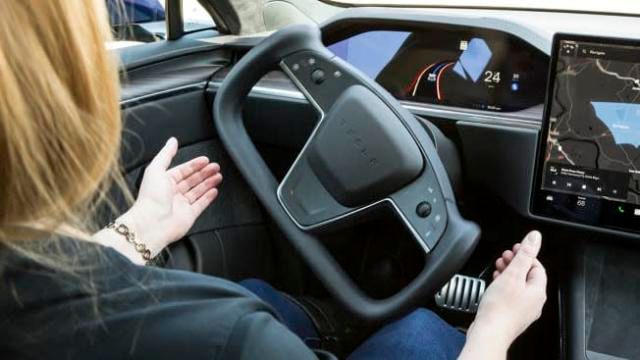An inquiry of Tesla and its Autopilot driver-assistance system is being greatly expanded by the primary auto-safety agency of the federal government in order to assess whether or not the technology constitutes a threat to public safety.
The organisation, the National Highway Traffic Safety Administration, said on Thursday that it was upgrading its preliminary study of Autopilot to an engineering analysis. This is a more in-depth degree of inspection, which is necessary before a recall can be authorised.
The purpose of this study is to determine whether or not the Autopilot system is successful in preventing drivers from taking their eyes off the road and participating in other predictable and hazardous behaviours when they are using the system.
According to the NHTSA, there have been 35 collisions that took place while the Autopilot feature was engaged. Of these, there have been 14 fatalities resulting from nine of these collisions. On Thursday, however, the company said that it has not yet established whether or not the Autopilot system had any flaws that may lead vehicles to crash while it is in operation.
The scope of the probe has been expanded to include 830,000 automobiles that were sold in the United States. They include Tesla’s Model S, Model X, Model 3, and Model Y automobiles in their respective model years ranging from 2014 to 2021. Both Autopilot and its numerous component systems, which are responsible for steering, braking, and other driving functions, will be evaluated by the agency, in addition to a more sophisticated system that Tesla refers to as Full Self-Driving.
The primary emphasis of the preliminary investigation was placed on 11 collisions in which Tesla automobiles that were being driven by Autopilot were responsible for striking parked emergency vehicles that had their lights blinking. The National Highway Traffic Safety Administration (NHTSA) said on Thursday that during that examination, the agency became aware of 191 accidents, including but not limited to ones involving emergency vehicles, that merited further investigation. According to the agency, these incidents had place when the vehicles were using either the Autopilot mode, Full Self-Driving mode, or other connected capabilities.
Although Tesla instructs users to exclusively use Autopilot on divided highways, the technology may be engaged on any streets that feature lines down the centre of the roadway. Only when driving on highways are drivers able to use the GM and Ford technologies, respectively referred to as Super Cruise and BlueCruise.
Mr. Musk claimed, in contrast to the engineers working on autonomous cars at almost every other business, that the achievement of autonomy could be accomplished merely via the use of cameras that tracked their surroundings. However, a significant number of Tesla engineers questioned whether or not it was prudent to depend only on cameras rather than other sensing equipment.
In 2016, a man from Ohio was murdered when the autopilot feature of his Tesla Model S caused it to collide with a tractor-trailer as it was travelling along a highway in Florida. This incident sparked concerns about the technology. After conducting an investigation into the collision, the NHTSA reported in 2017 that it had not identified any safety flaws in Autopilot.
However, in 2016, the government published a notice stating that driver-assistance systems that do not successfully keep drivers engaged “may also constitute an unjustified danger to safety.” In a separate investigation, the National Transportation Safety Board came to the conclusion that the autopilot system had “played a major role” in the crash that occurred in Florida. This was due to the fact that, despite the fact that it worked as it was supposed to, there were no safeguards in place to prevent it from being abused.
NHTSA started its preliminary investigation of Autopilot in August. At first, the agency concentrated on 11 accidents in which Tesla vehicles that had Autopilot engaged collided with emergency vehicles that had stopped with their lights flashing. These accidents involved fire trucks, police cars, and other types of vehicles. These collisions led to the deaths of one person and injuries to 17 others.
During the course of investigating those collisions, it was revealed that six more accidents included emergency vehicles. As a result, one of the initial 11 was disqualified from further investigation.
During this period, the agency was also made aware of scores of more collisions that had place while the Autopilot feature was on but did not involve any emergency vehicles. Out of them, the government first focused its attention on 191, but it decided against doing more research into 85 of them because it was unable to collect sufficient evidence to determine with certainty whether or not Autopilot had a significant role in causing the incident.
The NHTSA discovered evidence that showed the drivers involved in almost half of the other 106 accidents were not paying their complete attention to the road. About a quarter of the 106 incidents took place on roadways where it is forbidden to activate the Autopilot feature.
In the course of conducting an engineering analysis, the Office of Defects Investigation at the National Highway Traffic Safety Administration (NHTSA) will on occasion acquire the vehicles it is evaluating and organise testing in an effort to identify flaws and reproduce issues that may be caused by them. In the past, it has disassembled components in order to uncover flaws and has requested comprehensive data from manufacturers on the operation of components, which often included confidential or trade secret information.
The procedure could take a few weeks, or maybe even a whole year or more. The NHTSA plans to wrap up the investigation within a year’s time. If it comes to the conclusion that a safety fault does exist, it has the ability to put pressure on a manufacturer to conduct a recall and fix the issue.
